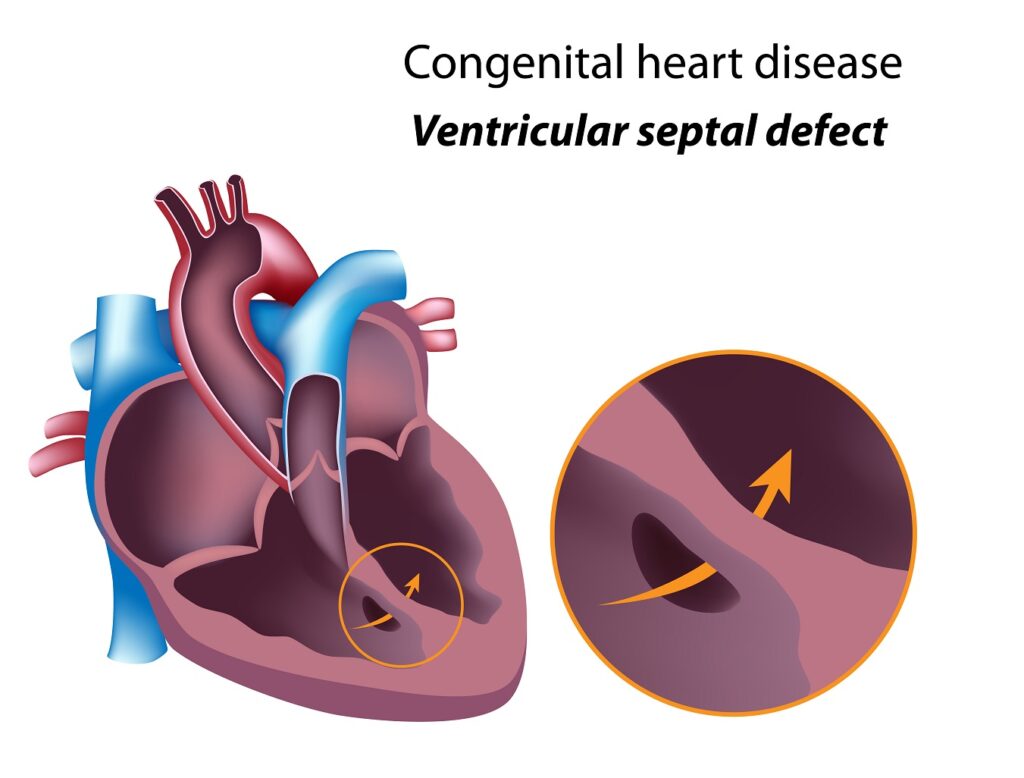Congenital Heart Defects
Beginning with the Heart: An Overview of Congenital Heart Defects
Birth problems known as congenital heart defects (CHDs) refer to anatomical abnormalities of the heart and associated blood arteries. These flaws may interfere with the heart’s regular blood flow, which could result in a number of problems. Certain CHDs are more significant and necessitate surgery or other operations, while others are minor and only require minimum intervention. This blog post delves into the specifics of congestive heart failure (CHD), elucidating its kinds, causes, symptoms, and available treatments to enable you to comprehend and properly manage this condition.
Table of Contents

The blueprint of the heart: Typical Organisation and Performance
The Chambers of the Heart: The heart is composed of two lower ventricles, which are the pumping chambers, and two upper atria, which are the receiving chambers.
Heart Valves: The heart has four valves that make sure blood flows through it in the right way.
- Mitral valve: located between the left ventricle and left atrium.
- Aortic Valve: Between the left ventricle and the aorta (main artery) is the aortic valve.
- Tricuspid Valve: Between the right atrium and the right ventricle is the tricuspid valve.
- Pulmonary valve: The pulmonary artery (the artery that supplies the lungs) and the right ventricle.
Blood Flow Pathway: The tricuspid valve allows blood to pass from the body into the right ventricle, which then pumps blood to the lungs via the pulmonary valve. This is the blood flow pathway. After leaving the lungs, oxygenated blood travels back to the left atrium, passes through the mitral valve into the left ventricle, and then exits the body via the aortic valve.
Septum: A muscle wall divides the heart’s left and right chambers to keep blood with and without oxygen from combining.
The Types of Congenital Heart Defects in the Blueprint
CHDs come in a variety of forms, each classified by a unique defect. Here are a few typical ones:
- Septal Defects: Perforations in the septum, which separates the heart’s chambers, can permit irregular blood flow.
- ASD (Atrioventricular Septal Defect): A hole in the atria.
- A gap between the ventricles is known as a ventricular septal defect, or VSD.
- Atrioventricular Septal Defect (AVSD): A combined defect with holes in the atrial and ventricular septa is known as an atrioventricular septal defect (AVSD).
- Valvular Defects: Deformities of the heart valves that prevent them from closing or opening properly are known as valve defects.
- Stenosis: A constricted valve that limits blood flow is called a stenosis.
- Regurgitation: The backward flow of blood due to a leaking valve.
- Patent Ductus Arteriosus (PDA): The foetal connection between the aorta and the pulmonary artery, known as the patent ductus arteriosus (PDA), normally shuts at birth but sometimes stays open in certain infants.
- Coarctation of the Aorta: Aortic coarctation refers to a narrowing of the major artery that leaves the heart.
- Tetralogy of Fallot: is the result of the union of four cardiac abnormalities: pulmonary stenosis, right ventricular hypertrophy (thickening), an overriding aorta (aorta situated over both ventricles), and ventricle overdilatation.
- Hypoplastic Left Heart Syndrome (HLHS): Underdevelopment of the left side of the heart causes Hypoplastic Left Heart Syndrome (HLHS), which impairs the heart’s ability to pump blood efficiently.
The Error in the Blueprint: Reasons for Congenital Heart Defects
It might be challenging to pinpoint the precise cause of a CHD. Nonetheless, a few things are thought to raise the risk:
- Genetics: A newborn is more likely to have CHD if there is a family history of the condition.
- Chromosome abnormalities: CHDs have been linked to conditions such as Down syndrome.
- Maternal Conditions: Pregnancy-related rubella infection or poorly managed diabetes are two examples of maternal disorders that can raise the risk.
- Certain Substances and Medications: Taking certain recreational drugs and medications while pregnant may be detrimental to the developing heart.
- Environmental Factors: Pregnancy-related exposure to specific chemicals or environmental dangers may be relevant.
The Signals From The Body: Signs of Congenital Heart Defects
Depending on the particular problem and how severe it is, different CHD symptoms may appear. Here are a few typical indicators:
- Blueish skin color (cyanosis): A blue-tinged skin tone, known as cyanosis, is caused by low oxygen levels in the blood, particularly around the lips and fingertips.
- Rapid breathing or shortness of breath: Breathing too quickly or experiencing dyspnea: The body’s attempt to make up for the reduced flow of oxygen.
- Fatigue: Easy tiring may result from the heart’s inefficiency.
- Poor feeding and failure to thrive: In babies with serious CHDs, poor eating and failure to thrive are common.
- Chest pain or discomfort: Less frequent, yet possible in certain CHD cases.
- Swollen ankles, legs, or abdomen: A possible consequence of heart failure is fluid accumulation.
- Heart murmur: An irregular sound heard using a stethoscope by a medical professional may indicate a cardiac condition.






Recent Comments